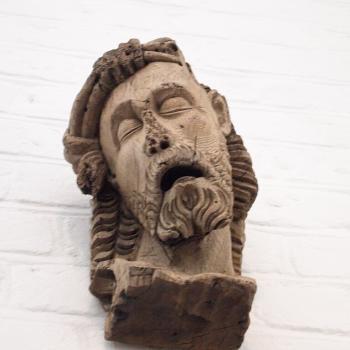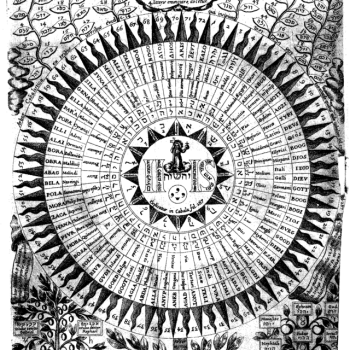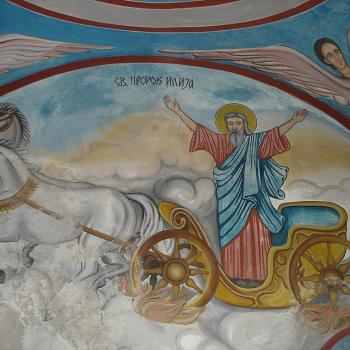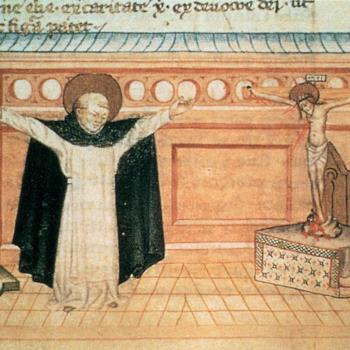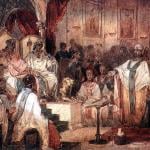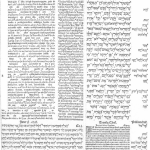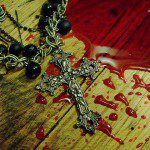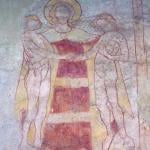Related to the historical and glorified forms, are the way the Logos can be seen in and through the words which represent him in myth and legend. In reality, there are two similar forms represented here, which must not be confused with each other, though they use the same means of interacting with us. One is a form which sees the Logos not as a person who entered into history, and so sees the myths and legends as a kind of religious fiction which helps motivate people, but has no historical reality to them. Even though his historical existence is denied, because his words and deeds, his ideas, are being spread through such discussion, the seeds of the Logos are sowing fertile minds as the Logos is truly encountered in this diminished encounter with him. Indeed, his teachings remain a challenge and affect positive change in those who see him as unreal but find various teachings of his, such as love for neighbor or his declarations of just treatment for the poor, as benefiting humanity. This is, perhaps, one of the weakest forms of encounter possible with the Logos, the Word is still not silenced, his voice is still being heard, the seed of the Gospel is being implanted in listeners, and through it all, hearts often find themselves changed for the better.
The other form of the mythic Logos comes out the Christ of history, but adds to it elements from the glorified Christ. It is a form which looks at Christ’s work in the past through the eyes not of history but of his divine activity, and so sees the glorified form of Christ “bleeding” through his historical self, allowing all kinds of extraordinary actions and possibilities being portrayed by him. It does not represent history as it happened according to the ways empirical history is delineated, but rather, it represents the supernatural effects of the Logos while trying to connect them to the life and times of the Christ of history. One of the greatest manifestations of this are the legends surrounding the holy grail which developed in medieval Europe, but we also see it in other legends, such as those surrounding St. Christopher. With Christopher, we see a higher reality being portrayed in and through legendary deeds – Christopher carried Christ with himself through the river of life.
![Homeless Jesus by Kjp993 (Own work) [CC BY-SA 4.0 (http://creativecommons.org/licenses/by-sa/4.0)], via Wikimedia Commons](https://wp-media.patheos.com/blogs/sites/637/2017/02/Homeless_Jesus_2016_London_Ontario-300x137.jpg)
Then there is the presence of the Logos as Christ who is encountered in and through his image, in icons and statues. They provide windows into heaven, showing the mythic and glorified forms of Christ through artistic vision. It is a theurgic form of Christ, where his presence is made real, reflecting upon and established in the Christ of history (his bodily form) while adding to it the grace and power of the glorified Christ. As a presence of the Logos, it is able to bring grace and peace to the souls properly disposed to encounter him through his image, and so effect great miracles.
Another encounter with the Logos is the presence of Christ in the eucharist. It appears to be bread and wine, but it is Christ who is before us, in his sacramental presence, able to be worshiped similar to the presence of Christ in icons, but transcends his presence in the icons because the eucharist brings the fullness of his person and not a derivative form of his presence to those who partake of it. We are called to eat, that is to take Christ into ourselves, so that we can become what we eat and find ourselves transformed into the final form of Logos we will present here, the church.




